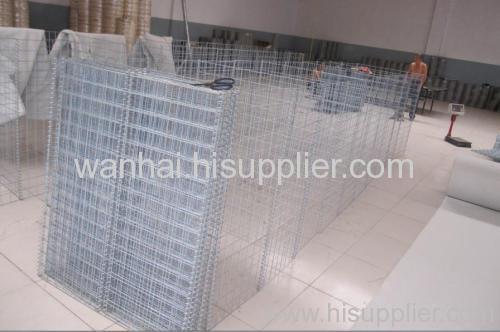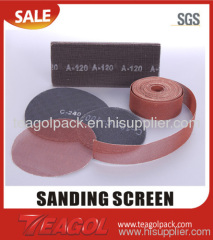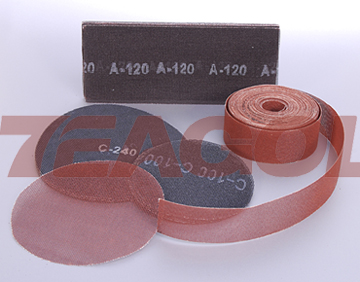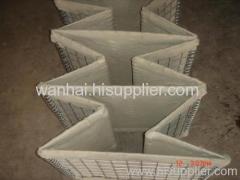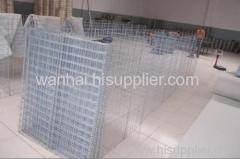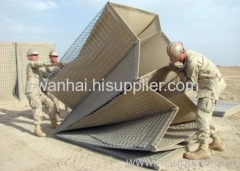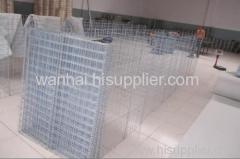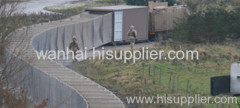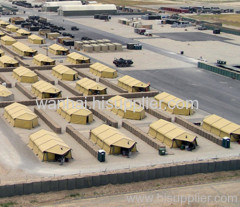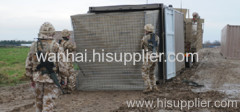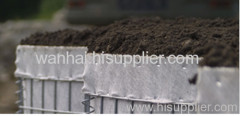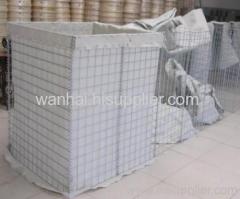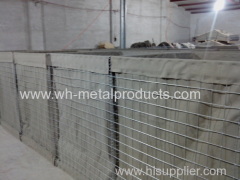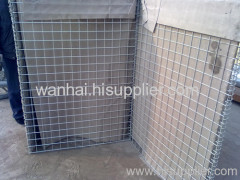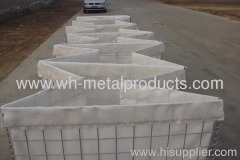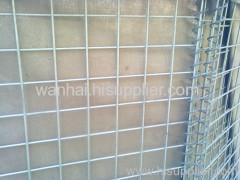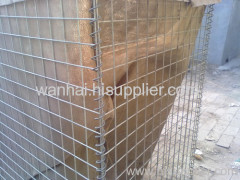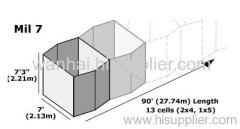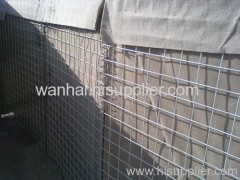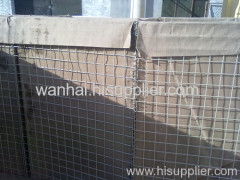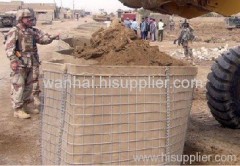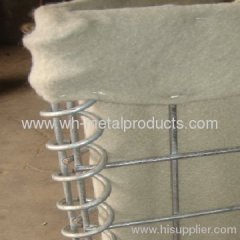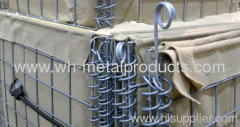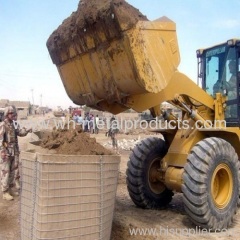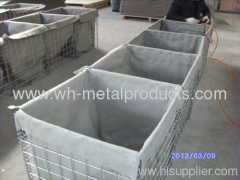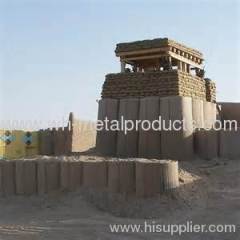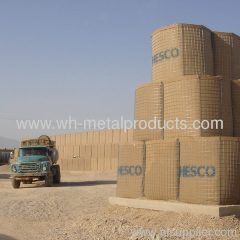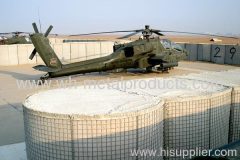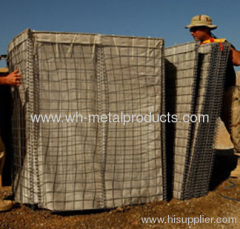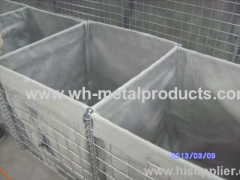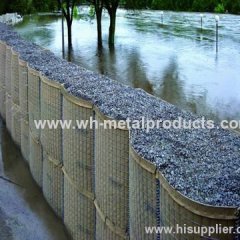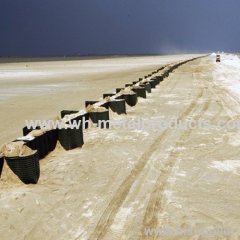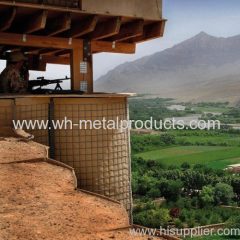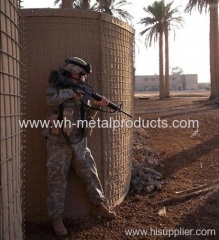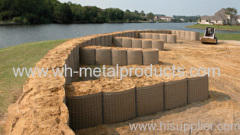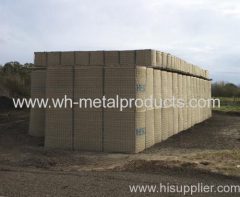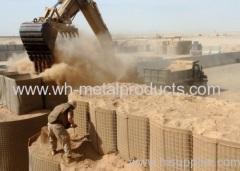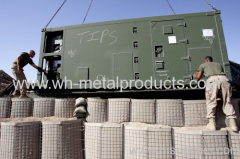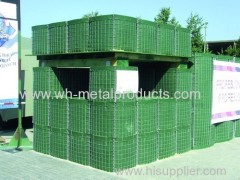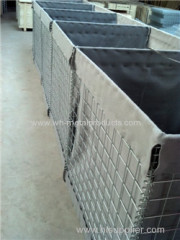
|
ANPING COUNTY WANHAI METAL PRODUCTS TRADING CO., LTD.
|
welded wire mesh Hesco Blast Wall
| Price: | 12.0~15.0 USD |
| Payment Terms: | T/T,L/C,D/P,WU, |
| Place of Origin: | Hebei, China (Mainland) |
|
|
|
| Add to My Favorites | |
| HiSupplier Escrow |
Product Detail
HESCO Barriers Blast Wall is a modern Gabion used for flood control and military fortification. is made of a collapsible wire mesh container
The hesco barrier or hesco bastion is a modern gabion for military fortification. It is made of a collapsible wire mesh container and heavy duty fabric liner, and used as a temporary blast or small-arms barrier. One of the less heralded life and labor-saving devices of war. originally designed for use on beaches and marshes for erosion and flood control.the "Hesco Bastion" as it is officially known, quickly became a popular security device .
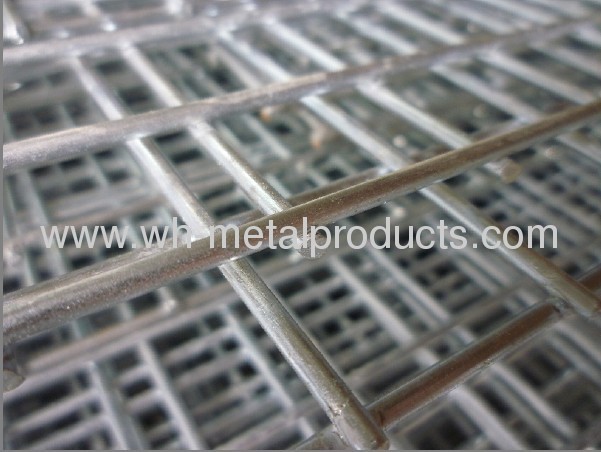

In general, it takes far less labor to build a Hesco Barrier than an equivalent structure made with sandbags.Hesco Barriers Blast Wall has been a key component in providing Force Protection since the 1991 Gulf War. It has been deployed with the U.S. Military, NATO, The United Nations and other military forces through out the world. Hesco Barriers Blast Wall is extensively used in the protection of personnel and key assets in military, peacekeeping, humanitarian and civilian operations.
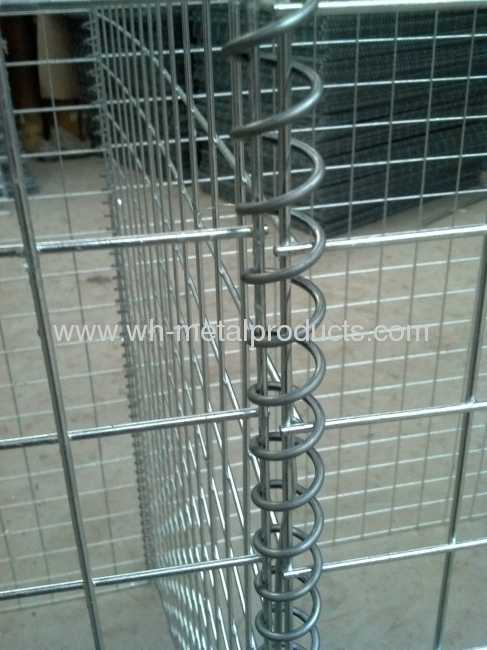

DETAILED PRODUCT DESCRIPTION
1. This is a collapsible wire mesh container with a heavy duty plastic liner. Open in up and use a front end loader to fill it with sand (dirt or gravel) and you have a protective barrier to protect personnel and equipment from enemy fire (or bombs).
2.The labor saving angle is very popular with the troops. Before the HESCO barriers, troops filled sandbags, which was slow. One soldier could fill about 20 sandbags an hour. Troops using Hesco barriers and a front end loader can do ten times the work of troops using sandbags.
(A) The Hesco barriers come in a variety of sizes designed for military work.
(B)And also,the sections of HESCO are being linked together and filled with sand to create a flood barrier from the rising waters of the Red River. U.S
3.Dimensions
Material: galvanized welded mesh, spring with other fittings, can be filled with sand, earth, cement, stone. Can be used in separate cell or some cells joint together.
Wire diameter: 3mm-5mm
Mesh opening size: 50mm-75mm
Panel size: The hesco Barriers come in a variety of sizes. Most of the barriers can also be stacked, and they are shipped collapsed in compact sets. Example dimensions of typical configurations are 4'6" x 3'6" x 32' (1.4m x 1.1m x 9.8m) to 7' x 5' x 100' (2.1m x 1.5m x 30m)., it also can be customized according to customer's requirement
Geotextile: in heavy duty non-woven polypropylene
Finish: hot dipped galvanized, electro galvanized
Packing: wrapped with shrink film or packed in pallet.
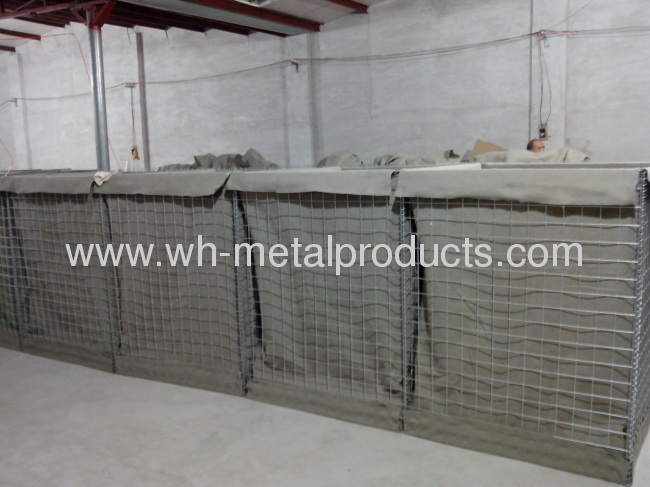
Wire diameter: 3mm-5mm
Mesh opening size: 50mm-75mm
Panel size: The hesco Barriers come in a variety of sizes. Most of the barriers can also be stacked, and they are shipped collapsed in compact sets. Example dimensions of typical configurations are 4'6" x 3'6" x 32' (1.4m x 1.1m x 9.8m) to 7' x 5' x 100' (2.1m x 1.5m x 30m)., it also can be customized according to customer's requirement
Geotextile: in heavy duty non-woven polypropylene
Finish: hot dipped galvanized, electro galvanized
Packing: wrapped with shrink film or packed in pallet.

4.Application
Perimeter security and defence walls
Equipment revetments
explosive and contraband search areas
Ammunition compounds
Personnel and material bunkers
Observation points
Defensive firing positions
Highway checkpoints
Border crossing checkpoints
Protection existing structures
High way traffic management
Flood control
Water courses
Emergency flood deployment
Erosion control
Retaining walls
5.Features
Easy to handle and install
High tensile and anti-impact capability
Long life, regular use
Can be filled with sand, earth, cement, stone.
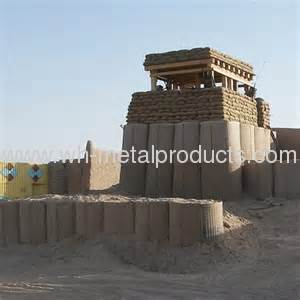
Perimeter security and defence walls
Equipment revetments
explosive and contraband search areas
Ammunition compounds
Personnel and material bunkers
Observation points
Defensive firing positions
Highway checkpoints
Border crossing checkpoints
Protection existing structures
High way traffic management
Flood control
Water courses
Emergency flood deployment
Erosion control
Retaining walls
5.Features
Easy to handle and install
High tensile and anti-impact capability
Long life, regular use
Can be filled with sand, earth, cement, stone.

6. Assembly
Assembling the Hesco Bastion entails unfolding it and (if available) using a front end loader to fill it with sand, dirt or gravel. The placement of the barrier is generally very similar to the placement of a sandbag barrier or earth berm except that room must generally be allowed for the equipment used to fill the barrier. The main advantage of Hesco Barriers, strongly contributing to their popularity with troops and flood fighters, is the quick and easy setup. Previously, people had to fill sandbags, a slow undertaking, with one worker filling about 20 sandbags per hour. Workers using Hesco Barriers and a front end loader can do ten times the work of those using sandbags.
A new system of Hesco Bastion developed specially for military use is deployed from a container, which is dragged along the line of ground where the barrier is to be formed, unfolding up to several hundred meters of barrier in minutes, ready for filling with soil by a backhoe.
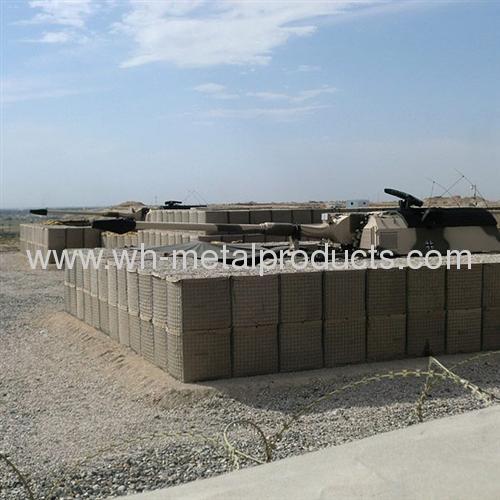
7.Protection
Filled with sand, 60 centimetres (24 inches) of barrier thickness will stop rifle bullets and shell fragments. It takes 1.5 metres (five feet) of thickness to prevent penetration by a rocket propelled grenade round(although these usually do not hit at the right angle to need that much thickness, but just explode creating a lot of fragments.). Approximately 1.2 metres (four feet) of thickness provides protection against most car bombs.
The Hesco barriers have prevented hundreds of casualties among US troops and done wonders for morale.
Assembling the Hesco Bastion entails unfolding it and (if available) using a front end loader to fill it with sand, dirt or gravel. The placement of the barrier is generally very similar to the placement of a sandbag barrier or earth berm except that room must generally be allowed for the equipment used to fill the barrier. The main advantage of Hesco Barriers, strongly contributing to their popularity with troops and flood fighters, is the quick and easy setup. Previously, people had to fill sandbags, a slow undertaking, with one worker filling about 20 sandbags per hour. Workers using Hesco Barriers and a front end loader can do ten times the work of those using sandbags.
A new system of Hesco Bastion developed specially for military use is deployed from a container, which is dragged along the line of ground where the barrier is to be formed, unfolding up to several hundred meters of barrier in minutes, ready for filling with soil by a backhoe.

7.Protection
Filled with sand, 60 centimetres (24 inches) of barrier thickness will stop rifle bullets and shell fragments. It takes 1.5 metres (five feet) of thickness to prevent penetration by a rocket propelled grenade round(although these usually do not hit at the right angle to need that much thickness, but just explode creating a lot of fragments.). Approximately 1.2 metres (four feet) of thickness provides protection against most car bombs.
Didn't find what you're looking for?
Post Buying Lead or contact
HiSupplier Customer Service Center
for help!
Related Search
Welded Wire Mesh
Galvanized Welded Wire Mesh
Fence Welded Wire Mesh
Stainless Welded Wire Mesh
Welded Mesh Wire
Galvanised Welded Wire Mesh
More>>

